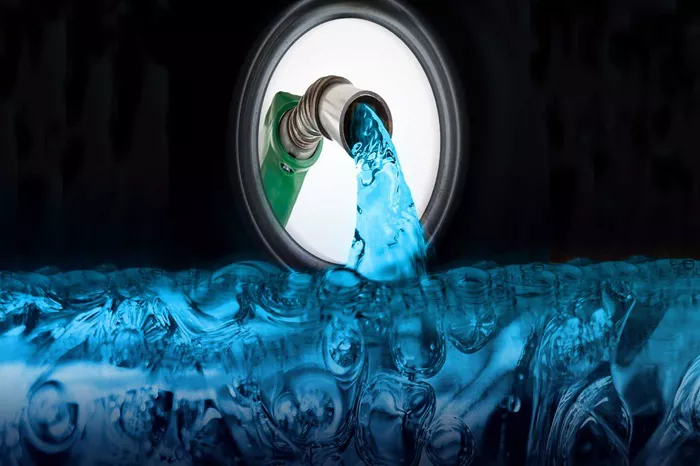Diesel fuel is a fundamental component of the transportation industry, powering vehicles from large trucks and buses to personal cars and generators. Typically, diesel is known for its clear or slightly yellowish hue, depending on its purity and source. However, encountering blue diesel fuel can raise questions and concerns about its composition, legality, and application. This article delves into the reasons behind the color variations in diesel fuel, with a particular focus on blue diesel, its uses, regulations, and the implications of using it.
Understanding Diesel Fuel Composition
What Is Diesel Fuel?
Diesel fuel, a type of liquid fuel derived from petroleum, is used mainly in diesel engines. These engines operate on the principle of compression ignition, where air is compressed to a high pressure and temperature before fuel is injected into the cylinder. Diesel fuel is made up of hydrocarbons and other chemical compounds, designed to provide high energy density and efficient combustion.
Additives in Diesel Fuel
Additives are included in diesel fuel for various purposes, including:
Improving Combustion Efficiency: Additives like cetane improvers help the fuel to ignite more easily, improving engine performance.
Preventing Corrosion: Corrosion inhibitors protect engine components from rust and corrosion.
Stabilizing Fuel: Oxidation inhibitors prevent the fuel from degrading over time.
Enhancing Lubricity: Lubricity additives reduce friction between moving parts within the engine.
Why Is Diesel Fuel Blue?
Reasons Behind the Blue Color
There are several reasons diesel fuel may appear blue:
Dye Additives: Specific dyes are added to diesel fuel to distinguish between different grades or for regulatory compliance.
Special Formulations: Certain industries require specific fuel formulations, which may include a blue dye for identification.
Regulatory Requirements
In many countries, fuel dyes are used to indicate compliance with tax regulations or environmental standards. For example:
Off-Road Diesel: Often dyed to differentiate it from on-road diesel, which is subject to higher taxes.
Marine Diesel: Might be dyed blue to distinguish it from regular diesel due to its specific use and formulation.
See also: Will Alcohol Remove Water from Diesel Fuel? [Revealed]
Legal and Illegal Use of Dyed Diesel
Permitted Uses of Dyed Diesel
Certain applications allow for the use of dyed diesel:
Agricultural Equipment: Farmers often use dyed diesel for tractors and other farm machinery.
Construction Sites: Heavy machinery on construction sites may use dyed diesel.
Marine Vessels: Boats and ships may use specially dyed diesel fuel.
Consequences of Illegal Use
Using dyed diesel in on-road vehicles when not permitted can result in severe penalties:
Fines: Significant fines can be imposed for illegal use.
Seizure of Vehicles: Authorities may confiscate vehicles using illegal fuel.
Criminal Charges: Repeat offenders could face criminal charges.
Environmental and Safety Considerations
Impact on the Environment
Using the correct type of diesel fuel is crucial for minimizing environmental impact:
Emission Standards: Different types of diesel fuel may comply with various emission standards.
Contamination Risks: Misuse of dyed diesel can lead to environmental contamination.
Safety Precautions
Handling and using diesel fuel safely is essential:
Proper Storage: Diesel fuel should be stored in appropriate containers to prevent leaks and spills.
Spill Response: Procedures should be in place to handle spills promptly and effectively.
Personal Protective Equipment (PPE): Individuals handling diesel fuel should use appropriate PPE to prevent skin and eye contact.
Conclusion
Understanding the reasons behind the color of diesel fuel, particularly blue diesel, is essential for ensuring proper use and compliance with regulations. Whether for on-road, off-road, or marine use, the specific formulations and additives used in diesel fuel are designed to meet the needs of various industries while adhering to legal and environmental standards. As technology and regulations evolve, so too will the landscape of diesel fuel usage, emphasizing the importance of staying informed about the latest developments in the field.
FAQ on Diesel Fuel
1.What color is bad diesel?
Bad diesel can appear darker or murky, often due to contamination or degradation.
2.What color is normal diesel?
Normal diesel is usually a clear to light yellowish color.
3.Can I use blue diesel in my car?
No, blue diesel, often a reference to dyed fuels like those for off-road use, is not suitable for regular vehicles and could be illegal.
4.What do the different colors of diesel mean?
Different colors of diesel often indicate different types of fuel, such as red diesel for off-road use or green diesel in some regions, each with specific uses and regulations.
5.Is removing AdBlue illegal?
Yes, removing or tampering with AdBlue systems is illegal and can lead to fines and damage to your vehicle.
Related topic:
Who Is The Largest Producer Of Diesel Fuel?

